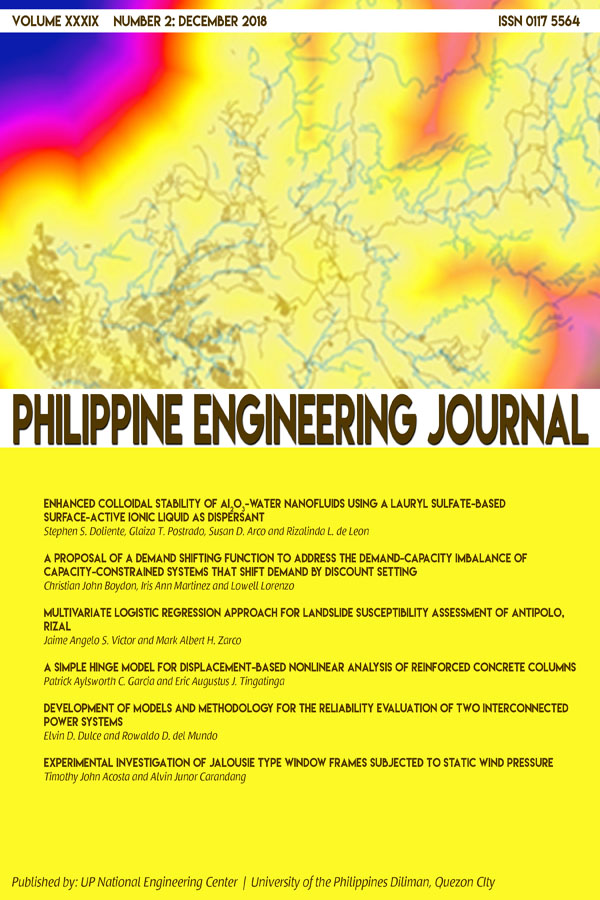Development of Models and Methodology for the Reliability Evaluation of Two Interconnected Power Systems
Abstract
Abstract – This study developed analytical and probabilistic models and methodology that simultaneously take into account the intermittency of wind power, the seasonal variation in hydropower, and the load forecast uncertainty, in evaluating the reliability of two interconnected power systems. The intermittency of wind power was incorporated by using a sliding window approach with a 7-hour period while the seasonal variation in hydropower was incorporated by considering the hourly generation. A seven-step approximation of the normal distribution was used for the load forecast uncertainty considerations. The Loss-of-Load Expectation (LOLE) in the Luzon Grid in 2014, when assisted by the Visayas Grid, increased from 53 hours/year to 95 hours/year when the intermittency of wind power, the seasonal variation in hydropower, and the load forecast uncertainty were considered. On the other hand, when the Luzon Grid is the assisting system, the LOLE in the Visayas Grid increased from 12 hours/year to 32 hours/year. A significant improvement was observed in the accuracy of the calculated LOLE in the two interconnected power systems when the intermittency and the seasonal variation in the generation, and the load forecast uncertainty were simultaneously considered.
Keywords—Reliability, Loss-of-Load Expectation, Intermittency, Seasonal Variation, Load Forecast Uncertainty


